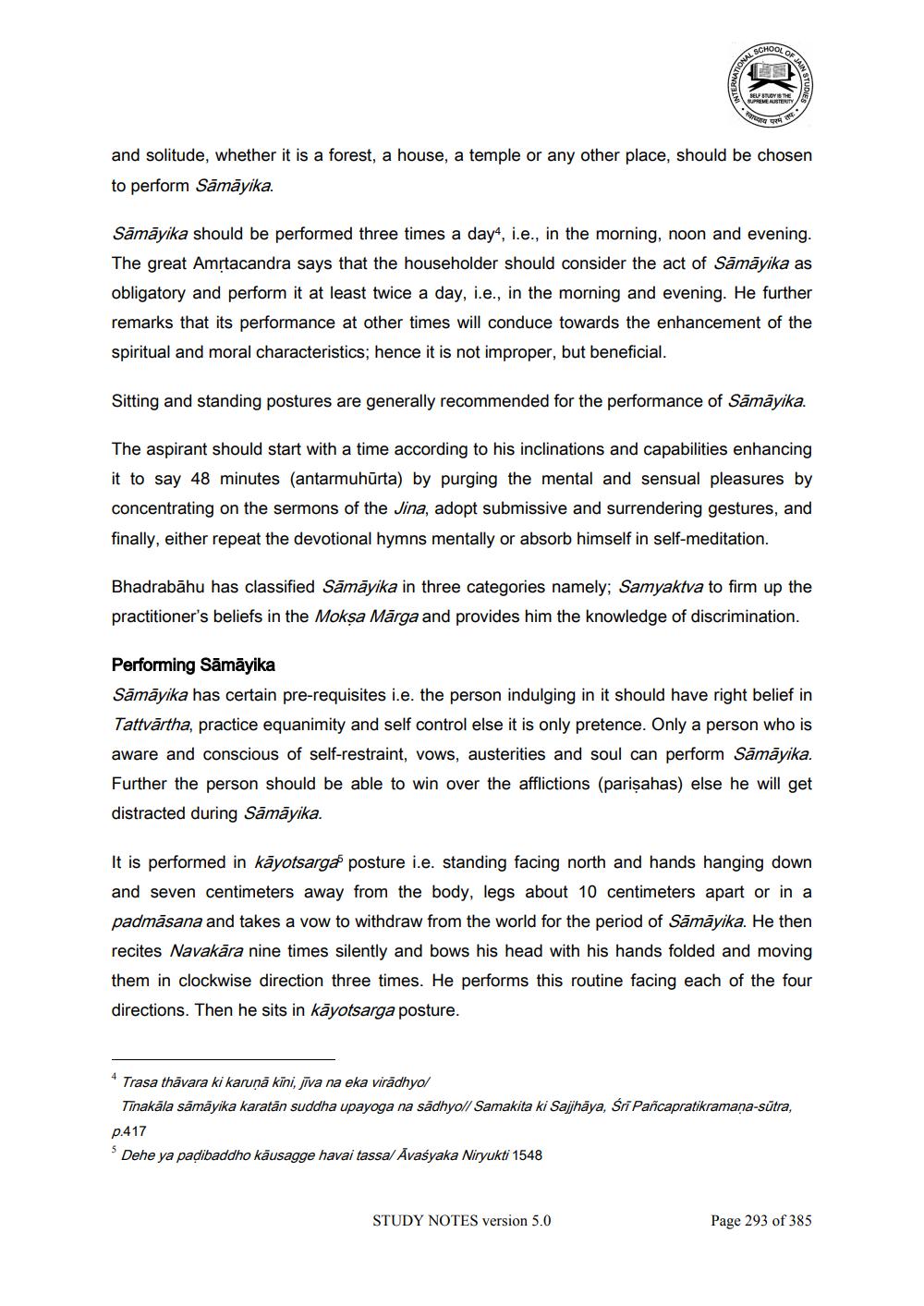________________
SCHOOL
OF
SELF STUDY IS THE SUPREME AUSTERITY
Farenga
and solitude, whether it is a forest, a house, a temple or any other place, should be chosen to perform Sāmāyika.
Sāmāyika should be performed three times a day, i.e., in the morning, noon and evening. The great Amṛtacandra says that the householder should consider the act of Sāmāyika as obligatory and perform it at least twice a day, i.e., in the morning and evening. He further. remarks that its performance at other times will conduce towards the enhancement of the spiritual and moral characteristics; hence it is not improper, but beneficial.
Sitting and standing postures are generally recommended for the performance of Samayika.
The aspirant should start with a time according to his inclinations and capabilities enhancing it to say 48 minutes (antarmuhurta) by purging the mental and sensual pleasures by concentrating on the sermons of the Jina, adopt submissive and surrendering gestures, and finally, either repeat the devotional hymns mentally or absorb himself in self-meditation.
4
STUDIES
Bhadrabahu has classified Sāmāyika in three categories namely; Samyaktva to firm up the practitioner's beliefs in the Moksa Marga and provides him the knowledge of discrimination.
Performing Sāmāyika
Sāmāyika has certain pre-requisites i.e. the person indulging in it should have right belief in Tattvärtha, practice equanimity and self control else it is only pretence. Only a person who is aware and conscious of self-restraint, vows, austerities and soul can perform Sāmāyika. Further the person should be able to win over the afflictions (parişṣahas) else he will get distracted during Sāmāyika.
STUDY NOTES version 5.0
It is performed in kayotsarga posture i.e. standing facing north and hands hanging down and seven centimeters away from the body, legs about 10 centimeters apart or in a padmāsana and takes a vow to withdraw from the world for the period of Sāmāyika. He then recites Navakara nine times silently and bows his head with his hands folded and moving them in clockwise direction three times. He performs this routine facing each of the four directions. Then he sits in kayotsarga posture.
Trasa thävara ki karuņā kīni, jīva na eka virädhyo/
Tinakāla sāmāyika karatan suddha upayoga na sadhyo// Samakita ki Sajjhāya, Śrī Pañcapratikramaṇa-sūtra, p.417
5 Dehe ya padibaddho kausagge havai tassa/ Avasyaka Niryukti 1548
Page 293 of 385




